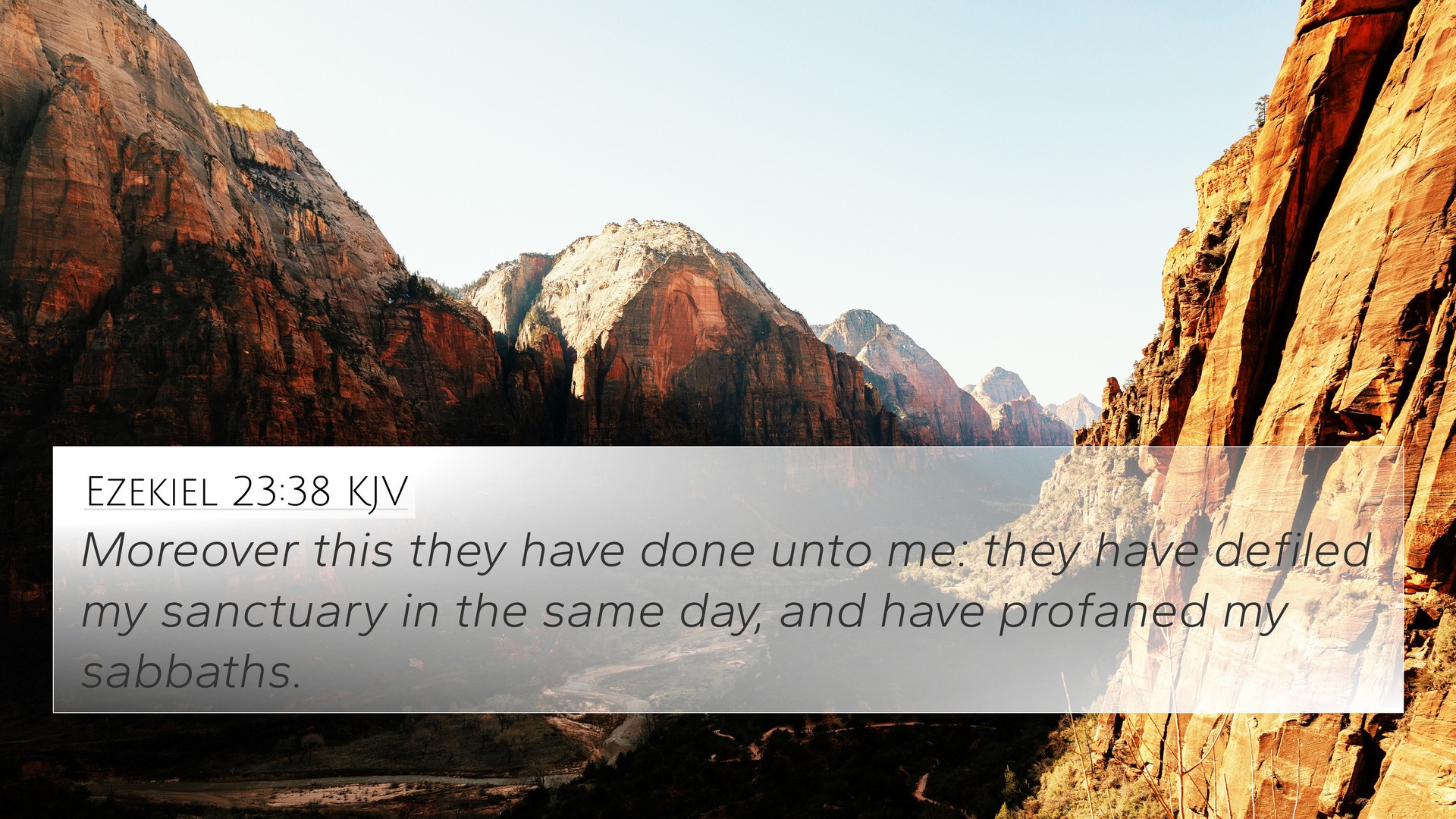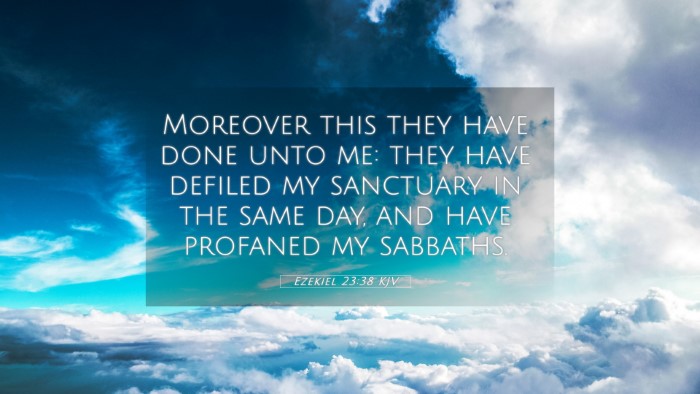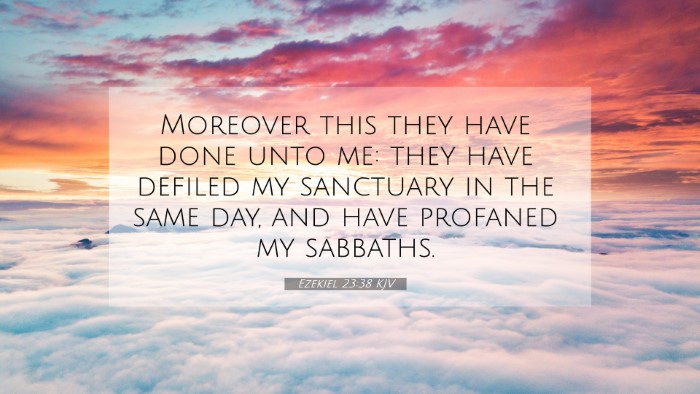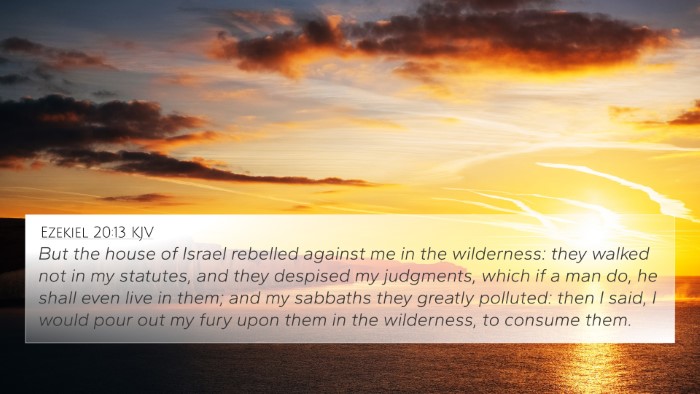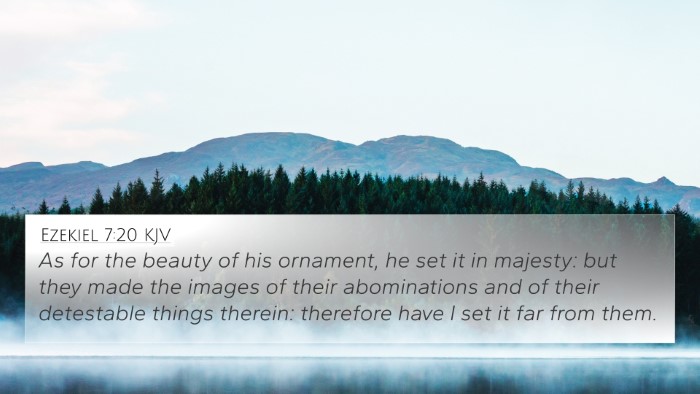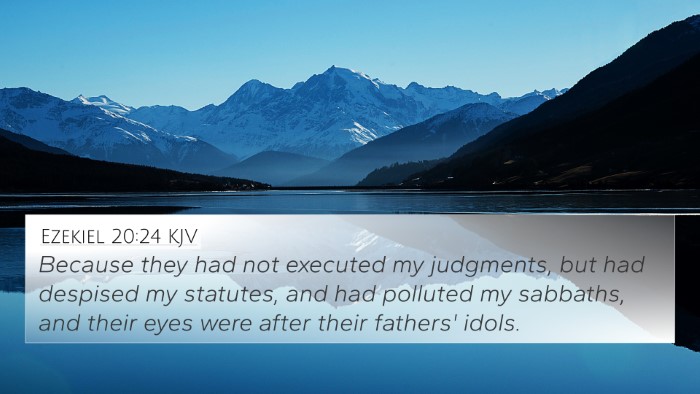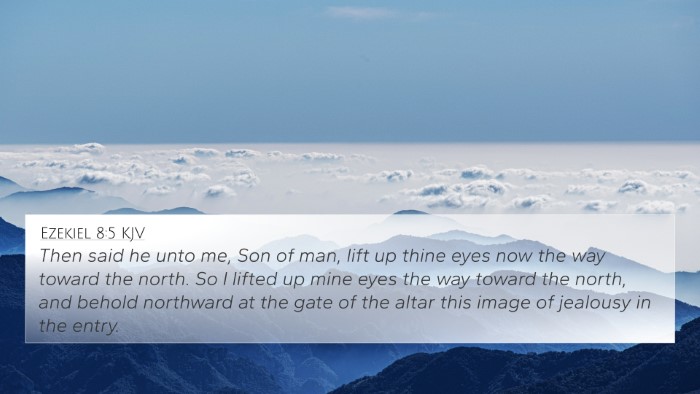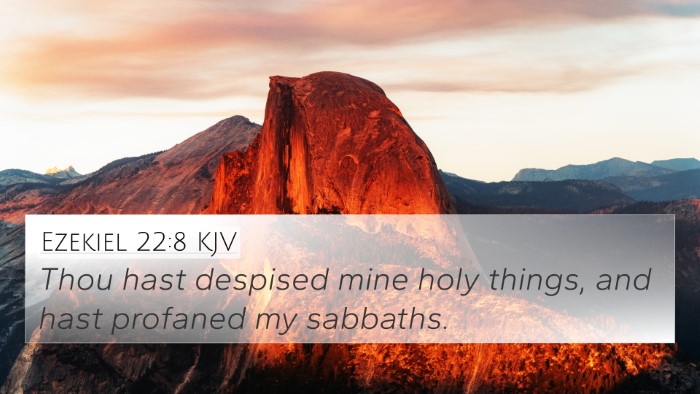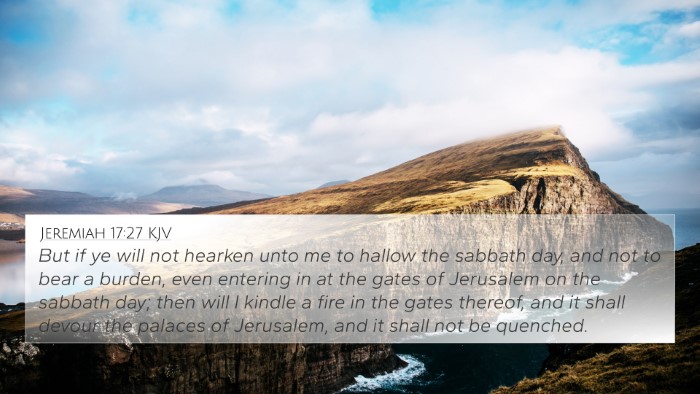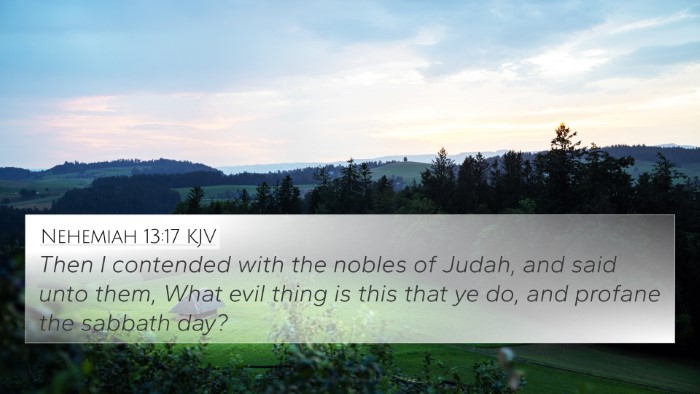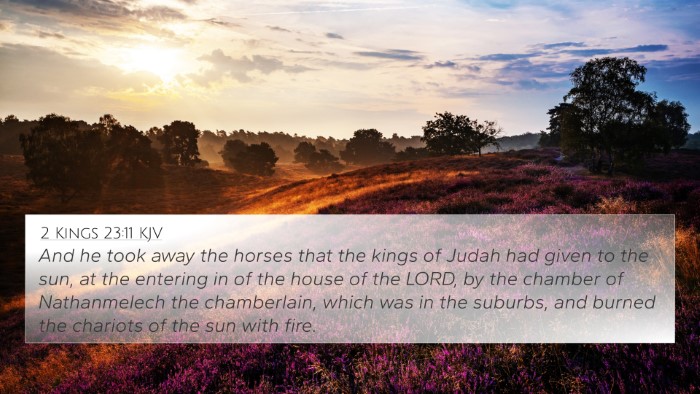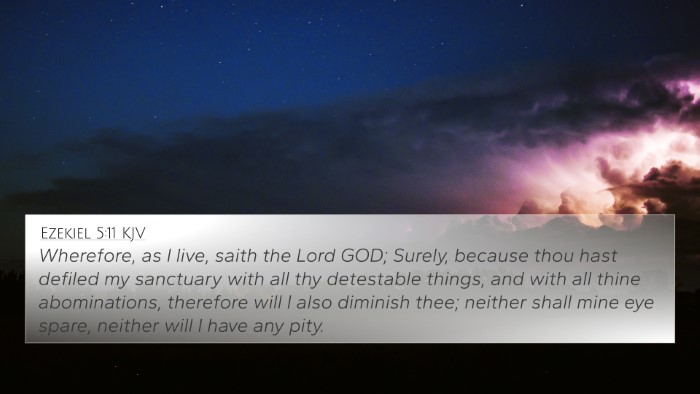Bible Verse Meaning: Ezekiel 23:38
Ezekiel 23:38 states: "Moreover this they have done unto me: they have defiled my sanctuary in the same day, and have profaned my sabbaths." This verse is part of a larger prophetic narrative concerning the two infamous sisters, Oholah and Oholibah, symbolizing the kingdoms of Israel and Judah. The Lord, speaking through Ezekiel, laments the spiritual unfaithfulness of His people and the resultant desecration of the sacred.
Summary of Insights
This verse reveals several critical themes in the context of Biblical prophecy and God's relationship with His people:
- Defilement of the Sanctuary: The act of defiling God's sanctuary symbolizes a grave offense against divine holiness. Matthew Henry emphasizes that the physical sanctuary represents spiritual purity which must not be tainted by sin.
- Profaning the Sabbaths: Albert Barnes notes that the Sabbath is a sign of the covenant between God and His people. By profaning this sacred day, the Israelites exhibit their ultimate disobedience and detachment from God's commandments.
- Historical Context: Adam Clarke provides insight into the historical context of the verse, linking it to Israel's idolatrous practices and the ways these acts distorted the intended relationship between God and His chosen people.
Bible Verse Cross-References
To understand Ezekiel 23:38 in fullness, we can identify several relevant Bible verses that connect with its themes:
- Leviticus 19:30: "Ye shall keep my sabbaths, and reverence my sanctuary: I am the Lord." This verse highlights the importance of honoring God's sanctuary and the Sabbath.
- Isaiah 1:12-14: "When ye come to appear before me, who hath required this at your hand, to tread my courts?" These verses discuss the futility of worship without genuine repentance.
- Jeremiah 7:30-31: "For the children of Judah have done evil in my sight, saith the Lord; they have set their abominations in the house which is called by my name, to pollute it." This explicitly links to the theme of defilement of sacred spaces.
- Ezekiel 8:6: "And he said furthermore unto me, Son of man, seest thou what they do? Even the great abominations that the house of Israel committeth here, that I should go far off from my sanctuary?" Here, God warns against the abominations that lead to His withdrawal from the people.
- Hebrews 10:29: "Of how much sorer punishment, suppose ye, shall he be thought worthy, who hath trodden under foot the Son of God, and hath counted the blood of the covenant, wherewith he was sanctified, an unholy thing?" This verse connects to the New Testament understanding of holiness, reflecting the seriousness of defiling what is sacred.
- Ezekiel 20:16: "Because they despised my judgments, and walked not in my statutes, but polluted my sabbaths: for their heart went after their idols." This underscores the rebellion against God's instructions.
- John 2:19-21: "Jesus answered and said unto them, Destroy this temple, and in three days I will raise it up. But he spake of the temple of his body." This New Testament passage connects Jesus to the theme of defilement and restoration.
Understanding the Themes Further
The themes in Ezekiel 23:38 reflect more significant Biblical truths about God's nature and justice. Both Matthew Henry and Albert Barnes highlight that these actions led to severe consequences not only for the individuals involved but for the community as a whole.
This verse is also pivotal in understanding God's persistent call to repentance. Despite the grave offenses committed against Him, God's grace persists as He seeks restoration with His people. The profaning of the Sabbath and the temple serves as a continual reminder of the need for spiritual renewal.
Thematic Bible Verse Connections
To grasp the depth of Ezekiel 23:38, we can utilize various tools for Bible cross-referencing. Engaging with inter-Biblical dialogue aids in analyzing how themes of holiness, judgment, and redemption are interwoven throughout Scripture:
- Tools for Bible Cross-Referencing: Utilizing a Bible concordance helps find cross-references on related themes, while a Bible cross-reference guide can enhance your study.
- Identifying Connections: Understanding the connections between Old and New Testament texts is vital in seeing the complete narrative of God's revelation.
- Bible Cross-Referencing for Sermon Preparation: Pastors and teachers can use cross-referenced themes to deepen their messages, providing a holistic view of Biblical teachings.
Conclusion
In conclusion, Ezekiel 23:38 serves as a profound reminder of God's holiness and the seriousness of sin within His covenant community. The integrated teachings from public domain commentaries illuminate the layered meanings of this verse, showcasing its relevance both in historical context and current application in the believer's life. By utilizing Biblical cross-references, we can gain richer insights into the faithful character of God and the call to live in accordance with His statutes.
Key Takeaways
- Understanding the significance of God's sanctuary and the Sabbath helps grasp the weight of sin and defilement.
- Engaging with cross-references can uncover deeper connections between verses and enhance personal Bible study.
- Emphasizing God's desire for repentance and restoration forms the foundation of His relationship with humanity.
- Continued exploration of cross-references reveals a thematic unity throughout the entirety of the Scriptures.
